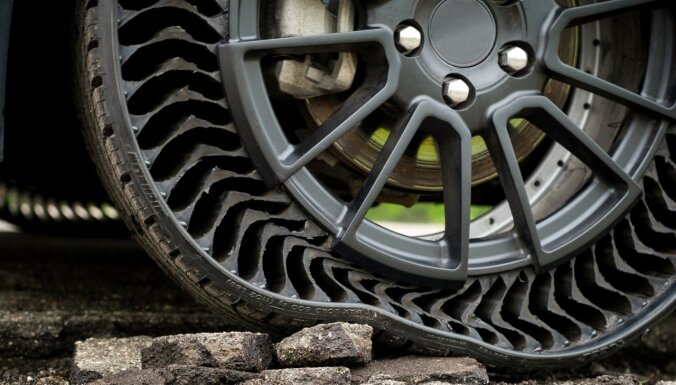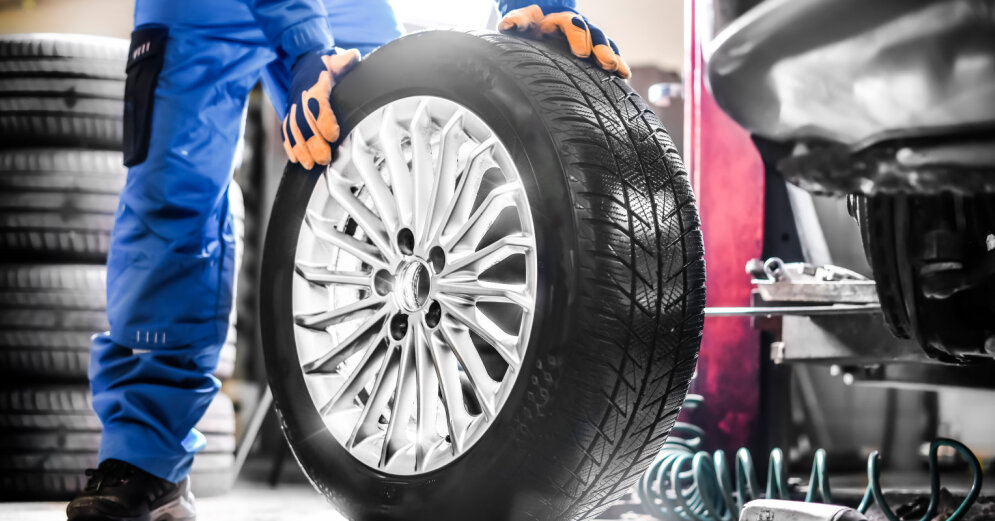Along with the spread of cars, the demand for tires has also increased and more than two and a half billion car tires are produced worldwide every year, says Gundars Liekne, head of tire sales at “Inter Cars Latvija”.
The content will continue after the announcement
Advertising
Over the years, the car has gone from a luxury item available only to a select few to a daily necessity for millions of people around the world. The demand for iron rims, therefore, has naturally increased the need for tires, which have undergone considerable transformations over the years.
People whose surnames are now known to almost everyone – John Boyd Dunlop, Charles Goodyear André and Eduard Michelin – with their inventions and discoveries have helped advance the economic development not only of the automotive industry, but also of the whole world.
Recalling that November 30 is the date by which all cars must replace summer tires with winter ones, “Inter Cars Latvija” offers to look back almost a century and a half into the distant past to learn interesting facts about the history of tires, as well as to see what awaits us in the future.
The invention that changed everything
The first rubber tires appeared only in the middle of the 19th century. This happened almost immediately after Charles Goodyear invented vulcanization in 1839, which greatly facilitated the production of rubber for tire manufacturing. If it were not for this discovery, there would be no tires, which are equipped with practically all light and even heavy cars.
The idea of using a layer of air to soften shocks and reduce wheel friction came from the Scottish engineer Robert Thomson, who received a patent for the invention of an “improved wagon wheel” on December 10, 1845.
“Initially, these tires were wooden discs on which a rim consisting of a layer of hard rubber was placed. The molded rubber tires represented a breakthrough in driving comfort and, although the use of such tires reduced tremors and vibrations, the driving was still not comfortable, “says Liekne.
In 1887, John Boyd Dunlop, the founder of the now well-known tire manufacturer “Dunlop”, invented the first pneumatic or pneumatic tire.
He was motivated by a desire to improve driving comfort for his ten-year-old son. Dunlop came up with the idea of putting large circles made from a garden hose on his son’s tricycle and filling them with air.
The following year, in 1888, Dunlop patented his invention, but commercial tire production began in the late 1890s when Dunlop ceded his patent to William Ducro in exchange for 1,500 shares of the fledgling company. It should be noted that Dunlop later did not gain much from his invention.
The brothers who perfected the tires
Legend has it that the idea of a removable tire came to the owners of the rubber factory, the brothers Andre and Eduard Michelin, after a two-wheeler owner with a damaged tire approached them for help.
They spent several hours fixing the tire that was stuck on the bicycle wheel. And then the youngest of the brothers, Eduards, thought that a tire was needed, which if necessary could be easily removed from the wheel.
Eduard, experimenting, made several prototypes and two years later, in 1891, the Michelin brothers received the patent for a demountable tire.
“It was a significant improvement over Dunlop’s invention, which immediately became popular. Michelini soon realized that even more growth was possible by adapting their invention to cars,” says Gundars Liekne.
Synthetic tires and mass production
The 1920s saw the development of tire manufacturing capabilities, but it wasn’t until 1931 that mass production of synthetic rubber, once completely dependent on natural rubber, began.
The next significant step in car history was taken after World War II, when the Michelin brothers invented radial tires. They reduced the weight of the vehicle, significantly saving fuel consumption. This invention largely enabled the “Michelin” company to gain 100% control of the tire market in 1968.
The most significant innovation that tires have experienced in the last 50 years is the so-called “run flat” tire, invented in 1979, which can continue on the road for about 80 kilometers at a speed of 80 kilometers per hour even after a puncture or otherwise damaged.
The future of tires starting now
Since 2012, new passenger cars have to be equipped with tire pressure monitoring systems, but the original concept of tire or tire has not changed for more than 130 years. It must be said that it will probably experience changes in the coming years.
“Tire manufacturers are actively working to create the tires of the future. Companies regularly present new ideas and research, which often have little to do with the tires we know today,” says Liekne.
According to him, the first airless tires could enter the market as early as 2024. The tire tread inside them is supported by a structure consisting of flexible plastic spokes that are directly connected to the profiled tread. Depending on the concept, these rods can be made from polyester resin or fiberglass and most importantly, they will be extremely durable.

Producer “Happy New Year“is currently working on the next generation of tires that will no longer be filled with air, with the aim of producing the first tires made from 100% sustainable and maintenance-free material by 2030. These tires will consist of three elements: the outer ring (including tread), connecting mesh and disc.
Another tire manufacturer, Michelin, has also developed a concept that involves creating a tire that never actually needs to be replaced. This will be possible thanks to a capsule filled with a special mixture of liquid rubber, with which the tread can be automatically filled.
“No matter how revolutionary different concepts and approaches may seem, the development of new tires will continue to aim to improve the safety and performance of the car. It will also be important to save natural resources and reduce fuel consumption,” said the head of the car. tire sales in “IC24.lv”.


